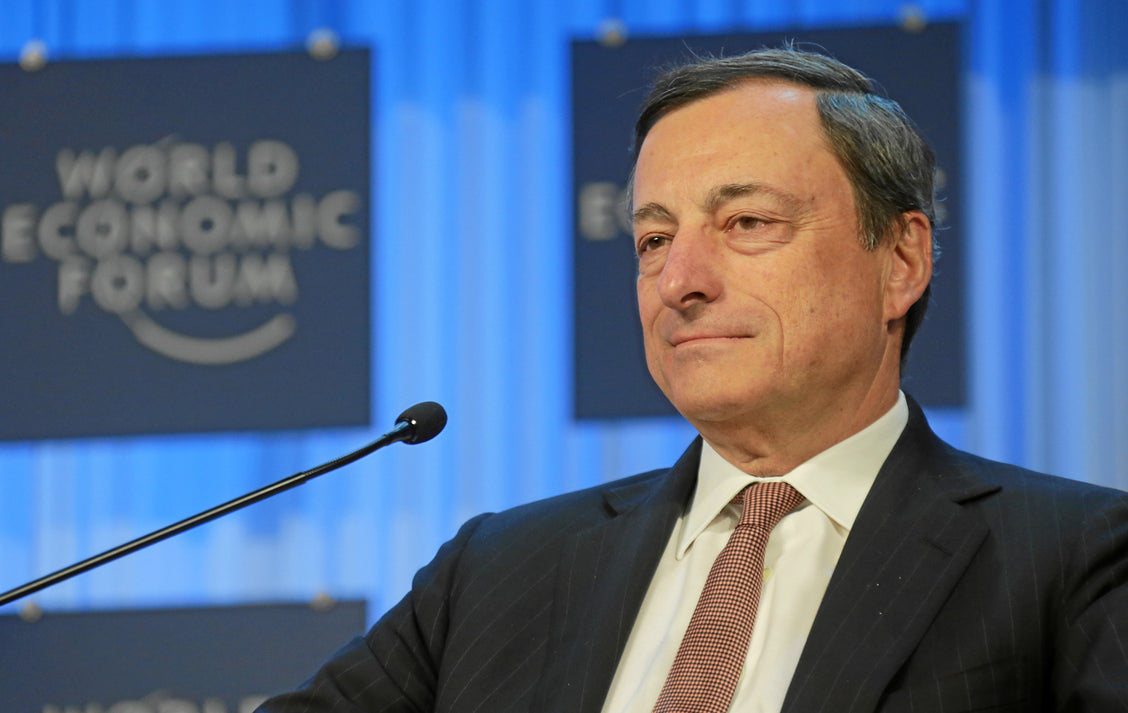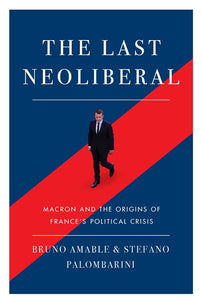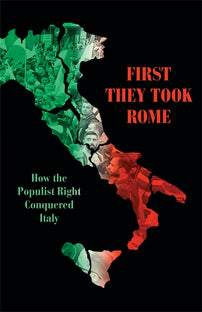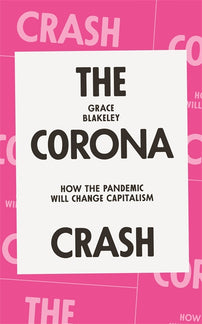Draghi's Government Marks the Paradoxical Return of the Bourgeois Bloc
Stefano Palombarini, co-author of The Last Neoliberal, marks the return of the technocratic Italian Prime Minister and warns that this is only the morbid symptoms of a politics without future

Having been plucked from outside the political arena, Mario Draghi was recently appointed to head Italy's new government. His administration is based on a very broad majority ranging from the far-right Lega to the Democrats and even part of Liberi e Uguali (LeU), an assemblage of small movements representing what remains of the parliamentary Left. Those who've followed recent Italian political history will know this is not a wholly novel situation: indeed, there were three such precedents over the last thirty years. Carlo Azeglio Ciampi was the first technocrat to lead a "national unity" government (in 1993-4), and he was followed by Lamberto Dini's administration (1995-6) and more recently the one headed by Mario Monti (2011-13).
In each of these past instances, rather motley coalitions took form mid-way through a parliament, in reaction to some major political crisis. Three of the four technocrats who were called on to "save" Italy — in each case presented as being on the brink of collapse — were former central bankers; the only one who hadn't filled such a job, Monti, was himself very closely linked to the world of banking. A further recurrent trait is the European dimension of the political crises that give rise to these super partes governments. Ciampi was called in after the lira had crashed out of the European Monetary System in autumn 1992. Monti replaced Berlusconi, who had in October 2011 openly seen his legitimacy cut from underneath him by a Merkel-Sarkozy press conference, which sparked a dramatic rise in the interest rates on Italian debt. Draghi has now come in with the central mission of negotiating the Recovery Fund money that the European Union has offered in reaction to the pandemic-era collapse in economic activity.
Technocrats are nothing new in Italian politics
This government's profile would suggest that the use these European funds is the decisive factor driving this political development. In Draghi's bid to orchestrate a balance among the parties supporting his government, he has handed them several important ministries: foreign affairs, defence, healthcare, etc. Out of 23 ministries, 15 directly represent political forces, while only 8 are non-party technocrats. But the three ministries that will have a say on the conditions under which the European funds are obtained and used are figures close to the prime minister himself: Vittorio Colao will have the brief for technological innovation and the digital transition, Roberto Cingolani the green transition, and Daniele Franco — who pursued the bulk of his career at the Bank of Italy — the economy and finance ministry. These three ministries do not have to answer to any political force. The new economics minister is especially worth a little focus, as this will allows us to draw the connections between the new government and Mario Monti's administration.
The crisis that led to Berlusconi's resignation in 2011 was famously triggered by a letter from the European Central Bank (ECB), signed by Jean-Claude Trichet and… Mario Draghi. In this letter, the ECB governor Trichet and his anointed successor Draghi insisted that their buyback of Italian public bonds would be conditional on fiscal tightening and a series of structural reforms (the "liberalisation" of public services, a shift from sectoral collective bargaining to company-level agreements, changes to rules on layoffs, a reform to the pension system, etc.) This was nothing short of an agenda for government, and Berlusconi was ultimately considered too unreliable to make it happen; hence Monti took his place and made the ECB letter his roadmap.
Less well-known, in this story, is the episode related in a 2014 book by Forza Italia's Renato Brunetta [1] — a minister of Berlusconi's at the time and today a minister under Draghi. Three months before Berlusconi resigned, and having already been informed of the imminent publication of the letter, he phoned Draghi, telling him that he had got the message (he also decided to put up a few taxes in the meantime) and asked if he could see the letter before it was circulated publicly. Draghi told him that the Bank of Italy's Daniele Franco was working on the letter, and that the following day Franco would himself provide prime minister Berlusconi with a first version.
Monti's so-called "technical" government, created in order to apply the policies "advised" by the ECB letter, brought into being a sort of "bourgeois bloc" in Italy,[2] based on the connection between its European commitments and neoliberal reforms — then continued up till 2018 by the Letta, Renzi and Gentiloni governments. To fully grasp the paradoxical character of today's situation, it is worth remembering that this experience resulted in electoral disaster for its leading figures, and triumph for those who opposed it. The party Monti founded, Scelta Civica, ceased to exist in 2018 after getting less than 1 percent of the vote in that year's general election. After he lost control of the Democratic Party, Renzi split away to form Italia Viva, credited with around 3 percent in polls. Letta quit politics altogether, while Gentiloni also left the Italian political arena behind as he was nominated a European Commissioner[3] Opposed to the Monti government were the Lega and, yet more important, the Five Star Movement (M5s), which entered parliament in 2013 and five years later became the biggest single party. These two parties, which had frontally opposed the bourgeois bloc, became central players in the Italian political scene: in 2018, they together drew over 50 percent of the vote.
Yet, ten years after the emergence of a bourgeois bloc to which Draghi and Franco actively contributed, and three years after this same bourgeois bloc met with electoral collapse, Italy finds itself with a government headed by Draghi — with Franco holding the economic brief. And they can count on a near-unanimous parliamentary majority, even though there has been no election overturning the 2018 result!
A Keynesian narrative serving neoliberal reforms
But — most Italian media and political figures object — it would be mistaken to imagine that the period which is now beginning, with Draghi distributing Recovery Fund money, has anything to do with the austerity imposed by Monti. Such an objection calls for two different kinds of response.
Firstly, we should see the money dedicated to Italy in relative terms. If the €209 billion is seen as manna from heaven, this amounts to €127 billion in loans and €82 billion in grants spread out over six years. The loans will obviously be taken out at highly favourable interest rates, unlike what Italy would have to pay if it borrowed in its own name. According to the calculations set out by Emiliano Brancaccio and Riccardo Realfonzo in the Financial Times,[4] Italy will thus save as much as €24 billion in total over the next six years (as compared to pessimistic forecasts for the trend Italian interest rates follow).
As for the grants, it is worth remembering that, unless there is a (highly unlikely) Europe-wide tax to finance the Fund, it will rely on contributions from member states, according to their GDP. Thus, the Italian contribution will be of the order of €40 billion, reducing the net grant to Italy to €42 billion. So, even in the hypothetical situation most favourable to Italy, it will receive a total €66 billion in European aid over six years — €11 billion a year, compared to a €160 billion fall in GDP in 2020 alone. This is, therefore, very far from a large Keynesian-type stimulus.
The second response is more general in character and concerns the role of austerity in the bourgeois bloc's strategy. The need to keep a lid on the deficit, the risk of debt spiralling out of control, the burden that it will impose on future generations... these talking points usually play an important role in the discourse of decision-makers attached to the bourgeois bloc. Yet austerity is not, and has never been, their fundamental goal — rather, austerity is used instrumentally as a constraint that helps push through structural reforms. We could say the same thing of the "European idea": in these decision-makers' strategy, it has never been anything more than an instrument for easing Italian capitalism's transition toward the neoliberal model.
Drawing a parallel between the Monti and Draghi governments is thus entirely appropriate: if the former presented reforms as indispensable to stop debt exploding, the latter will say that they are necessary in order to secure European help. These structural reforms, which have reduced social protection, enfeebled public services and precaritised employment relations (for instance, Renzi's Jobs Act, which did not bring any fiscal savings), are what prompted Italian society's backlash against the bourgeois bloc governments. And this is also what produced the complete turnaround in the electoral balance of forces, with the rising strength of the Lega and the M5S's breakthrough.
Parties bereft of strategy
So, we should ask for what strange reason the parties that grew by opposing the bourgeois bloc administrations (M5S, Lega) and the parties that shed masses of voters because of their support for these same governments (the Democrats and Berlusconi's Forza Italia) have now all joined in supporting Draghi's government, with various degrees of enthusiasm. This, particularly when we consider that Draghi's strategy is again to form a bourgeois bloc — a project now rising from the ashes.
True — for the moment, we only know the broad outlines of the new government's programme. But it is no surprise that in his first public speech as prime minister, addressing the Senate on 17 February, Draghi emphasised the need for speedy reforms to strengthen competition, simplify the tax system, reduce compulsory deductions, make the public administration more efficient, and encourage the growth of hubs of excellence in the public research system. Again, the general framework is based on structural policies to facilitate innovation, growth and — as the European Recovery Fund demands — the green transition.
In this sense, support for businesses thrown into difficulties by the economic recession is to be selective, and the fight against rising unemployment will again entirely rely on "active policies" to boost employment. In the Senate, Draghi did not devote a single word to employment contracts, collective bargaining (which now mostly takes place at the company level), the minimum wage (which Italy still lacks), or salary levels, though he did forcefully emphasise his government's commitment to the EU, which will involve further transfers of sovereignty at the fiscal level. Even the rhetoric calling on Italians not to sacrifice the young generations' future to the selfishness of the elderly, stands in perfect continuity with the era of the bourgeois-bloc governments.
So, what explains the near-unanimous parliamentary support for the new government? The answer partly owes to the dynamics within each party; here I will stick to a brief analysis of the three main forces, i.e. the M5S, the Democrats and the Lega. But another important part of the answer lies in the bourgeois bloc's effect in restructuring political cleavages themselves, leaving deep marks on the ordering of the political and social conflict in Italy. I'll return to this point later on.
The Lega's spectacular turn — long campaigning for euro exit, up till the 2018 election campaign, but now supporting a government led by Draghi (who told the Senate that the euro is irreversible) — is surprising only for those unaware of the preponderant weight, within this party, of its traditional component, essentially linked to SMEs in Veneto, Lombardy and Piedmont, i.e. the richest and most industrialised part of Italy. For a long time Salvini's project was to transform his formation — till 2017 still called the Northern League for Padanian Independence — into a nationalist party with a strong territorial presence across the whole of Italy. This would allow it also to address the popular classes in central and southern Italy, heavily sacrificed on the altar of structural reforms and austerity.
Yet northern and especially north-east Italian industry, whose production and trade are very heavily integrated with the German economy, is unable to tolerate any prospect of a break with the EU, and especially any unilateral move. Just after the 2018 election and the Lega's rise to government in alliance with the M5S, Salvini quickly announced that he had 'changed his mind' on the euro.[5] A year later came the end of Giuseppe Conte's first government, as a result of the M5s's refusal to grant major fiscal autonomy to the regions — something which the Lega (under pressure from northern regional presidents) considered a priority. The nationwide, nationalist party that Salvini wanted to build thus had two souls: but each time a choice had to be made, the old Lega, representing the industrialised north, dictated the party line, without broaching even the least compromise with the expectations of the new electorate, instead rooted in the popular classes of central and southern Italy.
A choice also had to be made when the Lega decided whether to oppose Draghi or join his majority; and again, it was the expectations of classes linked to the world of SMEs that proved decisive. These latter have no desire for a clash with the European institutions, which they can perfectly well accept. But what they do demand is a major liberalisation of employment relations, and they also hope to enjoy some of the Recovery Fund resources. So, it would have made no sense to remain in opposition. Salvini declared that all he had asked of the new government was to cut income taxes, avoid the introduction of an inheritance tax, and not to increase property taxes.[6]
We can see well enough what social interests such aims correspond to — and also understand that this marks the end of the Lega's national project, as it folds back on its traditional bases. It is also worth emphasising that this does not necessarily imply any weakening of the wider right-wing coalition; Fratelli d'Italia, a neofascist party allied to the Lega in all elections, and which now stands alone in opposition, is directly targeting the electorate which the Lega is today abandoning. Salvini's strategy is thus easy enough to read: he is giving up on the popular support he so rapidly picked up in central-southern Italy, but through his support for Draghi he seeks to strengthen the Lega's role as representative of northern industry.
Matters are more complicated for the Democrats and the M5S, who in autumn 2019 ended up governing together, almost by accident. As I noted earlier, it was Salvini who put an end to Conte's first government, under pressure from northern regional presidents; the Democrats and M5S decided to form a new government (again under Conte) in autumn 2019 mainly to avoid early elections which the Right was sure to win. The new alliance's main characteristic, at least at first, was that parties caught in strategic crises came to play the leading roles in Italian political life.
From 2011 to 2018, the Democrats had been the main pillar of the bourgeois bloc. After backing Monti, the party chose the next three prime ministers for governments corresponding to this same social bloc (Letta, Renzi, Gentiloni). But the electoral effects were unmistakeable; in 2008 the Democrats had lost the general election with 33 percent support, but then fell to 25 percent in 2013 and 18 percent in 2018. After this searing defeat, Renzi's line — almost a caricature of the bourgeois bloc — was pushed into the minority, and he ended up quitting the Democrats and founding his own Italia Viva party.
Yet — and in this lies the whole problem — there has never been any real clash or sharp debate within the Democratic Party, such as might set different political lines against one another. Renzi brought about his own downfall, so to speak, and then left behind a formation lacking a political compass. Awareness of the social costs and inequality produced by "necessary reforms" is widespread in the party — but the only glue keeping the Democrats together is their strong and unconditional support for the European project. This glue is obviously an obstacle to a real critical analysis of the bourgeois-bloc period, though this is the necessary precondition for the development of any alternative political project.
The situation for the M5S is even more confused (if that were even possible). For its course seems more determined by the vagaries of the particular conjuncture, rather than any real political orientation on its part. Long opposed to the "caste" of parties — and determinedly rejecting any alliances — following its 2018 election triumph the M5s first offered the Democrats a pact, but then, after Renzi's refusal, it formed a coalition with the Lega; when Salvini decided to put an end to the alliance, the M5s turned back to the Democrats; and after Renzi pulled Italia Viva's support for the second Conte government (thus bringing its end) the M5s today finds itself allied to both the Lega and the Democrats, within Draghi's new majority.
Yet even this tortuous path is organised around a few broad guidelines. Its high vote (33 percent) in 2018 owed to its frontal opposition to the bourgeois bloc, structured around the defence of public goods, denouncing the privileges of the very wealthiest, and also its attention to green issues — an opposition accompanied with a deliberate ambiguity on essential questions like fiscal policy, the single currency and relations with the European Union. This vagueness, including highly erratic positions on immigration, allowed the M5S to rally voters from both Right and Left, hit by the bourgeois bloc's actions in government.
The conflictual tenor of the M5S's relations with the Lega during the first Conte government, and then its more cooperative relationship with the Democrats during the second, gradually led the M5s to position itself more or less clearly in favour of progressive taxation, against increasingly precarious employment relations, and also in favour of a bid to change the European treaties through negotiation, i.e. without any major rupture. M5s thus lost its share of voters coming over from the Right, and polls today credit it with around half the votes it took in 2018.
Conte's second government was thus based on the alliance between two formations — the Democrats, and Five Star — in strategic crisis but which, among internal conflicts and hesitation — were in some sense heading in the same direction. Indeed, Renzi's decision to withdraw his parliamentary backing for Conte, and to spark the crisis that led to the formation of the Draghi government, aimed to block the (still hypothetical) prospect of a new centre-left forming around the Democrats and M5S. Such an alliance would, doubtless, have been conditioned by a Europeanism in need of more critical scrutiny. But it could also have been attentive to social inequalities and the problems of precarity and poverty, especially in southern and central Italy.
The hegemony of the bourgeois bloc survives its social decline
The turbulence within the main protagonists of Italian politics, and the paradoxical emergence of yet another government following a bourgeois bloc strategy, can each be connected to a unitary framework. The bourgeois bloc is not simply a social alliance that brings together the middle and upper classes, from both Left and Right, around a neoliberal reform of capitalism that draws its legitimacy from the European integration process. It is also an ideological project, which entails a complete restructuring of political cleavages. The electoral disasters faced by both the Renzi-era Democrats and Berlusconi's Forza Italia — the parties which carried this project — have not erased the effects that this experience has had on the structuring of social and political conflict.
The Left/Right cleavage has, over the last ten years, been weakened in favour of others, which set Europe against nation, elites against people, cosmopolitans against identitarians, and globalists against sovereigntists. The bourgeois bloc brings together an alliance around one pole in these divides: an alliance which has seen its social reach gradually shrink, to the point of being completely minoritarian, but which remains coherent in both its goals and its support for the neoliberal-Europeanist strategy that undergirds its existence. The other pole of these same cleavages rallies a majoritarian but completely eclectic swathe of the population. Its heterogeneous character has, as we have seen, decisively undermined Salvini's project for a national Lega, and it is also the source of the strategic hesitations of the M5S and its decline since its 2018 victory. Similarly, the Democrats' unconditional support for the EU project — leading it to dismiss any real criticism of the EU as "populist" — corresponds to this party's positioning within cleavages driven by the bourgeois bloc, preventing it from really changing its political line.
The dominant media outlets denounce the whole political class as unable to propose any solid programme for government — hence why they see Draghi as the only man up to the task of breaking Italy out of its crisis. There is an element of truth to this, though only in part. For in reality the problem owes not to political figures' own personal qualities, but to the fact that the hegemony of the bourgeois bloc has survived its social decline.
Its hegemony has the direct effect of marginalising from the political battlefield such essential questions as the future of social protection, public services and employment relations, and forces the bourgeois bloc's opponents to define themselves on the basis of the cleavages which it has itself imposed. In this structuring of political conflict, as shaped by the bourgeois bloc, there is only space for one coherent political strategy — its own. That is why, faced with the imperative of handling a crisis unprecedented since the end of the war, a broad political majority has rallied around a project which has a minoritarian base in Italian society.
This does not mean that Draghi's policies will not have social consequences of the same order as the governments of the 2011-18 period did: they very probably will do. Then, the classes sacrificed by the bourgeois bloc's reforms sought an electoral means of expressing their discontent and their suffering. But what are they to do now? Will they again have an opportunity to make themselves heard democratically, and the persistence to make the possibility real? Nothing could be less clear. While reverting to the same quotes from a complex author like Gramsci risks caricaturing his thought, his conclusion seems the best way of summing up the current Italian crisis: "The crisis consists precisely in the fact that the old is dying and the new cannot be born; in this interregnum a great variety of morbid symptoms appear."
[book-strip index="1" style="display"]Originally published at Contretemps.
Translated by David Broder
Notes
[1] R. Brunetta : Berlusconi deve cadere. Cronaca di un complotto, Editore Il Giornale, 2014
[2] B. Amable, E. Guillaud, S. Palombarini: L’Économie politique du néolibéralisme. Le cas de la France et de l’Italie, Editions Rue d’Ulm, Paris, 2012
[3] S. Palombarini: 'L’Italie est malade du néolibéralisme (mais elle ne le sait pas)', Mediapart personal blog, 9 April 2020
[4] E. Brancaccio, R. Realfonzo: 'Draghi’s plan needs less Keynes, more Schumpeter', Financial Times, 12 February, 2021
[5] 'Italy has done a lot, maybe too much', interview with Salvini in the Washington Post, 19 July, 2018.
[6] Salvini speaking to "½ ora in più" RAI 3, 14 February, 2021.





